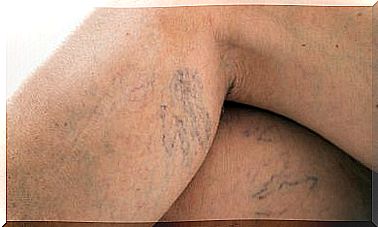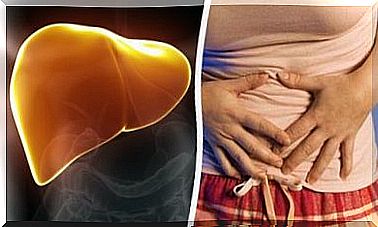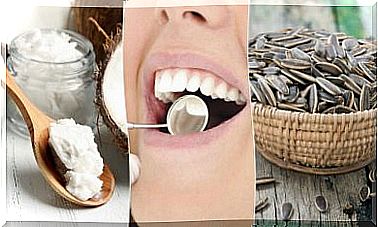Autumnal Asthenia: What Is It And How To Deal With It?
Fall asthenia affects most those who are programmed to see fall as a sad and unappealing season. That predisposition leads them to miss out on all the possibilities that this time of year brings with it, which can be fantastic.

Autumn asthenia is a physical and psychological condition that affects some people during the fall. It is characterized by a feeling of weakness or fatigue that decreases a person’s overall performance and detracts from motivation.
Everything indicates that autumnal asthenia is the result of a combination of several factors. The change of season brings with it the return to work activities, fewer hours of light and lower temperatures. The combination of these circumstances influences a person’s mood.
However, autumnal asthenia is also associated with a physiological change. The reduced availability of light leads to an increase in a hormone called melatonin. This, in turn, reduces serotonin production. The latter is related to the feeling of happiness.
Symptoms of autumnal asthenia

Autumnal asthenia is estimated to severely affect six out of 100 people living in countries with seasons. There are no estimates of the number of people who have mild manifestations of this anomaly.
Various investigations have indicated that those people who have a tendency to suffer from mood disorders would worsen during the changes of season. In general terms, the basic symptoms of this type of asthenia are the following:
- Feeling of physical and mental fatigue.
- Irritability or bad mood
- Sadness and decreased libido.
- Drowsiness.
- Difficult to focus.
Severe symptoms could be the following:
- Hopelessness and pessimism.
- Abrupt mood swings.
- Loss of interest in activities that used to attract attention.
- Sleep disorders.
- Compulsive eating
When the symptoms are very intense, it is called seasonal affective disorder. It most often affects women, young people and people who live far away from the equator and, therefore, have fewer hours of daylight.
Tips to overcome autumnal asthenia
If you think you have symptoms of autumnal asthenia, especially if they are severe, it is best to visit the doctor to receive timely guidance in this regard. However, there are some measures that can be taken to reduce these annoying manifestations. Among them are the following.
Get more light
Available data indicates that up to half of the people who have symptoms of this type of asthenia could benefit from increased exposure to light. The idea is to spend more time outdoors so that you can make the most of the sunlight.
The most advisable thing would be to go to bed earlier and get up earlier, too. In this way, you could make better use of the morning light. In addition, you could use a “light box,” a bright lamp that you can expose yourself to for 30 minutes a day for additional light.
Daily exposure to sunlight helps the body secrete more serotonin, a neurotransmitter closely associated with the control of emotions and mood.
Exercise every day

Exercise and physical activity in general are considered excellent allies to improve mood and invigorate the body. Autumn is a good time for long walks or cycling. Nothing better than to take advantage of it.
Physical activity would also stimulate the production of serotonin and endorphins. The latter are hormones associated with the feeling of well-being and joy. When exercising, they would increase and this would favor optimism and motivation.
Rearrange your life
It could be very convenient to review the outlook for autumn. It is possible that it is automatically associated with sadness and it should not be that way. While the weather and light require certain adjustments, these can also be very exhilarating.
The key is in adaptability. The right thing to do is to concentrate on all those activities that can be done during the fall and that are enjoyable. Adjust your schedules to light times, redecorate your house, spend more time with your family or friends indoors. The options are many.
Get into a new habit
A good antidote for autumn asthenia could be the acquisition of a new habit. Since a new stage begins, nothing more appropriate than to accompany it with some new activity or a new habit.
Fall is a great time to reorganize your home, office, or some part of it. It is also a good time to take classes in something that catches your attention or to practice a relaxing hobby.
Include the fruits and vegetables of the season in your diet
Food would also influence mood. The most convenient thing would be to adopt a new diet in which fruits and vegetables are the protagonists. Asthenia could be fought with a good proportion of vitamins, fiber and protein.
Autumn offers a series of products that come like a glove. Among them are pumpkins, aubergines, mushrooms, pomegranates, grapes and mandarins, among others. On the other hand, it would be advisable to reduce the consumption of caffeine, alcohol and tobacco.
When in doubt, consult your doctor

Don’t hesitate to ask for help if you feel that fall asthenia is more than a passing discomfort. If your mood falls off noticeably, you tend to isolate yourself and you remain in a bad mood, the psychological consultation can be of great help to you.
Get enough sleep and try to maintain a regular sleep and meal schedule. A good book or a good movie could be of great help in many moments. Spend your time in activities that you like and stay in touch with your partner, your family and your friends.









